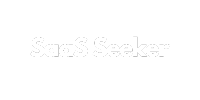As an entrepreneur, your time, energy, and budget are limited — and that means the tools you use matter. The right SaaS stack can streamline your operations, automate the boring stuff, and free you up to focus on what actually grows your business. But let’s be honest — the SaaS world is bloated with noise, and not every shiny app deserves a spot in your workflow.
So let’s cut through the fluff. Here’s a breakdown of the must-haves, the nice-to-haves, and the wastes of time — especially for early-stage and growth-focused businesses.

✅ Must-Have SaaS Tools for Entrepreneurs
1. CRM (Customer Relationship Management)
If you’re not tracking leads, client interactions, and follow-ups, you’re bleeding opportunities. A CRM is your nerve center — helping you stay organized, follow up on time, and close more deals. Look for something simple, customizable, and affordable to start with.
2. Email Marketing & Automation
You’re not serious about business if you’re manually emailing leads.
Email automation helps you nurture prospects, onboard new customers, and stay top-of-mind — all while you sleep.
Think sequences, triggers, and segmentation. Even basic automation can 10x your efficiency.
3. Project & Task Management
From solopreneurs to small teams, staying organized is non-negotiable.
Whether you prefer boards, timelines, or checklists, your task manager keeps you focused and accountable.
Look for tools that integrate with your calendar or comms stack, so nothing slips through the cracks.
4. Invoicing & Payment Processing
You can’t scale without cash flow. You need a system that makes it easy for clients to pay you, tracks invoices, sends reminders, and automates recurring payments (if applicable).
Skip the spreadsheets. Use real tools that eliminate friction.
5. Form Builders & Landing Page Creators
Whether you’re collecting emails, qualifying leads, or booking calls, forms and landing pages are the gateway.
You need a tool that looks good, converts well, and integrates with your CRM and email stack.

⚠️ Tools You Might Need (Later)
– Customer Support Platforms
Unless you’re running a high-volume product or service, a basic shared inbox or help desk can handle support. Upgrade when it starts to break.
– Team Communication Suites
Slack, Discord, internal wikis — useful for teams, overkill if you’re solo or small. Use what you need when you need it.
– Advanced Analytics Tools
Unless you’re operating at scale, native analytics (Google Analytics, email stats, CRM dashboards) are more than enough to track performance.
❌ Tools You Can Skip (For Now)
– Enterprise-Level SaaS Tools
If you’re not managing large teams, don’t buy into software built for corporations. It’ll waste your time and drain your budget.
– Overlapping Tools
If you’re using three platforms to manage the same task — stop. Consolidate. Simplicity wins.
– Tools You’re Not Actually Using
That subscription you keep “meaning to try”? Cancel it. If it’s not part of your core workflow, it’s clutter.
💡 Final Thought: Build a Stack That Works for You
The best SaaS tools are the ones that disappear into your process. They work in the background, automate what they should, and give you back time. Start with the essentials. Add only what solves a real problem. And if it doesn’t pull its weight — cut it.
Every tool should make you faster, smarter, or more profitable. If it doesn’t do that, it doesn’t belong.



